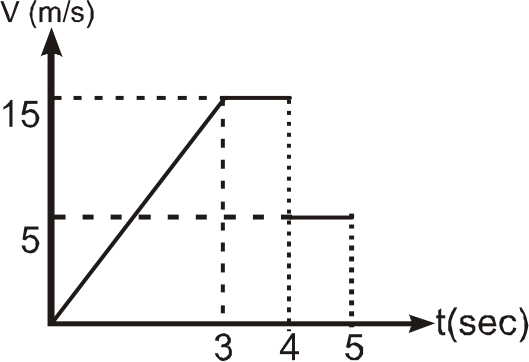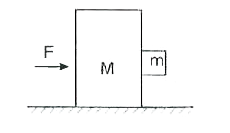A homogeneous rod of mass 3 kg is pushed along the smooth horizontal surface by a horizontal suface by a horizontal force F equal to 40 N. The angle θ for which rod hasd pure translation motion is (g=10m/s2)
45∘
37∘
53∘
60∘
The correct Answer is:B
Topper's Solved these Questions
- ROTATIONAL MOTIONBOOK - DC PANDEYCHAPTER - ROTATIONAL MOTIONEXERCISE - More than one option is correct
36 Videos
- ROTATIONAL MOTIONBOOK - DC PANDEYCHAPTER - ROTATIONAL MOTIONEXERCISE - Comprehension Type Questions
41 Videos
- ROTATIONAL MOTIONBOOK - DC PANDEYCHAPTER - ROTATIONAL MOTIONEXERCISE - Integer Type Questions
17 Videos
- ROTATIONAL MECHANICSBOOK - DC PANDEYCHAPTER - ROTATIONAL MECHANICSEXERCISE - Subjective Questions
2 Videos
- SEMICONDUCTORS AND ELECTRONIC DEVICESBOOK - DC PANDEYCHAPTER - SEMICONDUCTORS AND ELECTRONIC DEVICESEXERCISE - More than One Option is Correct
3 Videos
Similar Questions
A rod of mass m is released on smooth horizontal surface making angle θ with horizontal. Then which of the following statement is correct ?
View SolutionA body of mass 5 kg is at rest on a smooth horizontal surface. A horizontal force 'F' acts on it for 4s and then ceases to act. If the body travels 40 m in the next 5s, the value of F is,
View Solution
Knowledge Check
A rod of mass m is released on smooth horizontal surface making angle θ with horizontal. Then which of the following statement is correct ?
AAcceleration of rod along vertical is less than gBAcceleration of centre of mass along horizontal is zero.CAngular acceleration of rod is not constantDMomentum of the rod along vertical will remain constantA block of mass m is on the smooth horizontal surface of a plank of mass M The plank is on smooth horizontal surface Now, a constant horizontal force F acts on M. Now, for a person standing on the ground:
 Athe acceleration of m is FM towards westBthe acceleration of m is zeroCthe acceleration of m is Fm towards eastDthe acceleration of m is FM+m towards east
Athe acceleration of m is FM towards westBthe acceleration of m is zeroCthe acceleration of m is Fm towards eastDthe acceleration of m is FM+m towards eastThe figure shown the velocity as a function of the time for an object with mass 10kg being pushed along a frictioniess horizontal surface sby external horizontal force. At t=3s, the force stops pushing and the object moves freely. It then collides head on and sticks to another object of mass 25g
 AExternal force acting on the system is 50N from tj=0 to t=3 sec.BSpeed of the 2nd particle just before the collision is 1m/s.Cbefore collison both bodies are moving in the same direction.Dbefore collision, bodies are movng in oppostie direction.
AExternal force acting on the system is 50N from tj=0 to t=3 sec.BSpeed of the 2nd particle just before the collision is 1m/s.Cbefore collison both bodies are moving in the same direction.Dbefore collision, bodies are movng in oppostie direction.
A uniform rod of mass m and length l rests on a smooth horizontal surface. One of the ends of the rod is struck in a horizontal direction at right angles to the rod. As a result the rod obtains velocity v0. Find the force with which one-half of the rod will act ont he other in the process of motion.
View SolutionA uniform rod of mass m and length l rests on a smooth horizontal surface. One of the ends of the rod is struck in a horizontal direction at right angles to the rod. As a result the rod obtains velocity v0. Find the force with which one-half of the rod will act ont he other in the process of motion.
View SolutionA horizontal force F pushes wedge of mass M on a smooth horizontal surface. A block of mass m is stationary to the wedge, then:

View SolutionA body of mass 10 kg lies on a rough horizontal surface. When a horizontal force of F newtons acts on it, it gets an acceleration of 5m/s2. And when the horizontal force is doubled, it gets an acceleration of 18m/s2. The coefficient of friction between the body and the horizontal surface is
View SolutionA body of mass 10 kg lies on a rough horizontal surface. When a horizontal force of F newtons acts on it, it gets an acceleration of 5m/s2. And when the horizontal force is doubled, it gets an acceleration of 18m/s2. The coefficient of friction between the body and the horizontal surface is
View Solution
